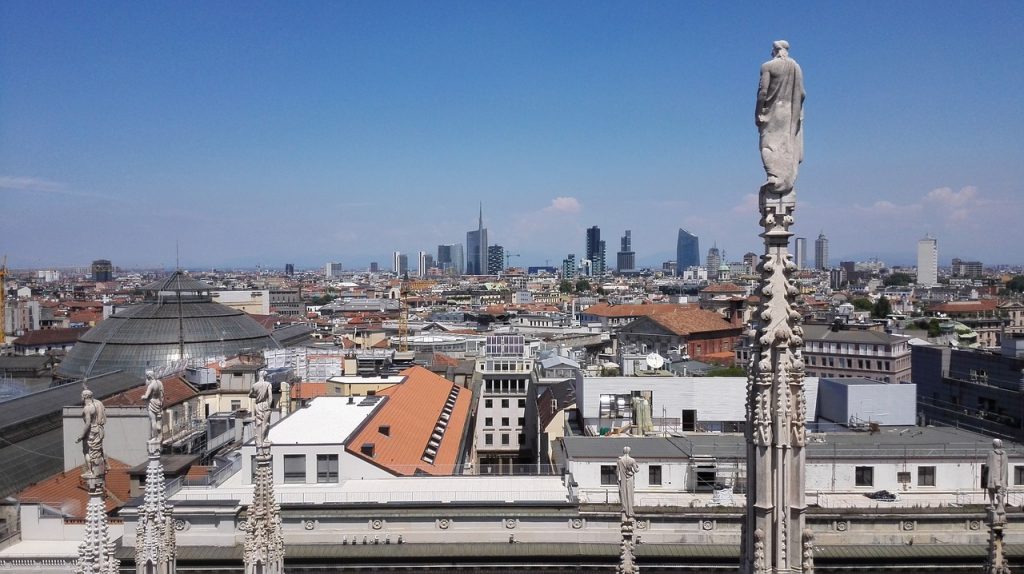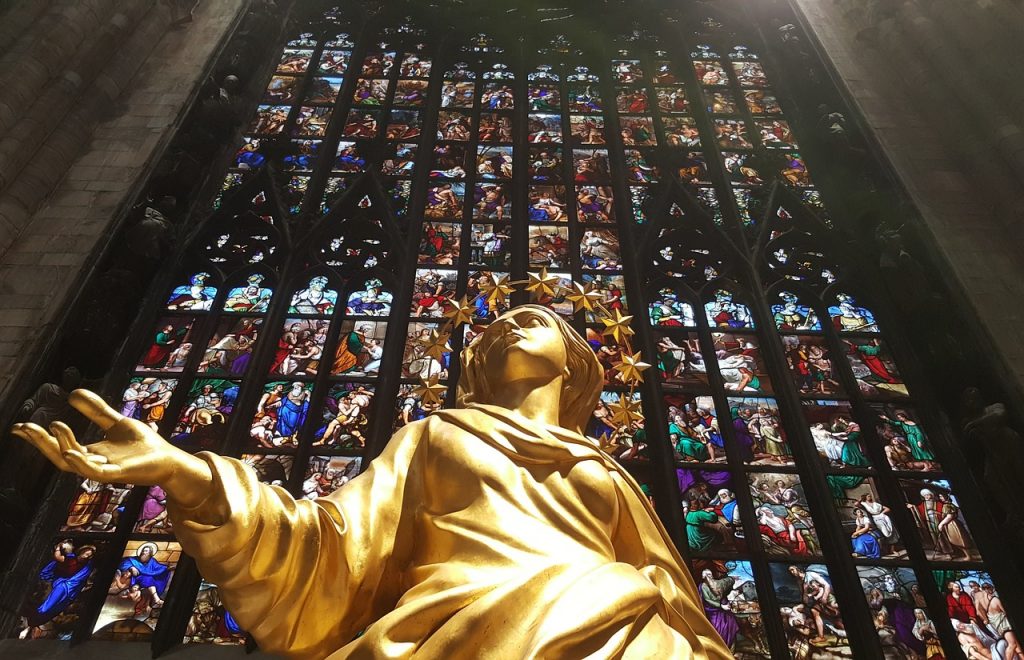The Milan Cathedral is the symbol par excellence of the city. In addition to being one of the most beautiful and largest churches in the world, it has little known but very interesting features. These are ten curiosities to be discovered.
The largest Gothic cathedral
Milan Cathedral is the largest Gothic cathedral in the world and the fifth largest church. Built in marble, it has spectacular dimensions: 158 meters in length and 93 meters in maximum width, for a total of over 11 thousand square meters of surface. Before it, in size, we find only the Basilica of St. Peter in Rome, the Basilica of Our Lady of Aparecida in Brazil, the Cathedral of San Giovanni Divino in New York and the Cathedral of Seville.

The building in the world with the highest number of statues
On the facade of the Milan Cathedral there are 3.400 statues, more than 135 Gargoyles and 700 other kinds of figures. Some of these statues are particularly bizarre. First of all the “horror” that reproduces the skinned St. Bartholomew, one of Jesus' apostles. The saint, in fact, carries a cloth on his shoulders that is not a cloak, but his own skin, on which muscles and blood vessels are visible. Other particular sculptures are those depicting the boxers Primo Carnera and Erminio Spalla, the demons of the Cathedral and the Madonna of the roses, without a rose. Another statue represents the fearsome dragon Tarantasio. A legend tells that, centuries ago, it lived in the waters of a lake near Lodi, devouring children and exhaling its pestilential breath all around, until the brave Umberto, descendant of the noble Visconti family, confronted and killed him.
On the facade of the Milan Cathedral, the twin of the Statue of Liberty
Among the numerous sculptures that stand out on the main facade there is one that more than the others catches the attention. AND "The New Law", identical to the famous Statue of Liberty in New York, but made over seventy years earlier by the sculptor Camillo Pacetti. It seems that it was this sculpture that inspired the overseas twin work, created by Frédéric Auguste Bartholdi.
The Madonnina and the halberd-lightning rod
The golden statue of the Madonnina, the work of Giuseppe Perego, from 1774, is located on the top of the Cathedral and from here watches over the city. 4,16 meters high, it is not only a religious and identity symbol of Milan, but protects the church from lightning. The halberd that the Madonna holds in her right hand is a real lightning rod. During particular days of the year, and on the occasion of holidays and anniversaries, it carries the Italian flag. Until the construction of the Pirelli skyscraper in 1958, the Madonnina remained the highest point in the city. As a sign of respect for the original, a copy of the statue was placed on the top of the skyscraper, then moved in 2010 to the top of Palazzo Lombardia, and in 2015 to the Isozaki Tower, today the tallest building in the city.

The Holy Nail of Christ
Inside the Cathedral, on the altar, there is a point marked with a red light. Here is guarded a holy nail from the cross of Christ. Every year, in the three days closest to September 14, it is shown to the faithful lowered with the "nivola", a cloud specially made in the sixteenth century. The devotion of the Holy Nail was born in the fourteenth century. In 1576, following the plague, Archbishop Carlo Borromeo carried the relic in procession through the city and inaugurated the Nivola rite.
Built in half a millennium
The construction of the Cathedral began in 1386 on the initiative of Bishop Antonio da Saluzzo and proceeded from the beginning conforming to the dictates of the Gothic of the northern cathedrals. In 1418 it was consecrated, even if only the nave was completed. For the next 200 years the works continued with frequent long interruptions. It was Napoleon who completed the façade and restarted construction at the beginning of the XNUMXth century.

the meridian
Not far from the main entrance of the Cathedral, on the floor there is a long brass line that runs the entire width of the cathedral. It is a sundial. It was built in 1768 by the astronomers of the Brera Academy. Incredibly accurate, it was used to set the city's clocks. Its peculiarity is the presence, in the surrounding tiles, of squares depicting the zodiac signs. The sundial also indicates the sign of the period: a ray of sunshine is conveyed inside the church through a hole in the vault of the first chapel, and directly illuminates the right zodiac sign.
The largest walkable roof in the world
The roof of the Duomo is completely walkable. Its surface, of 8 thousand square meters, makes it the largest walkable roof in the world belonging to a Gothic cathedral. The Terraces of the Duomo are located at a height between 65 and 70 meters from the street level and represent an ideal observation point. They can be reached on foot (climbing 250 steps) or by lift.

In the windows of the Milan Cathedral, the recipe for saffron risotto
The stained glass windows are one of the highlights of the cathedral. There are 55 in all, made between the end of the fourteenth century and the eighties of the twentieth century, reproducing stories from the Bible. In them we also find the origins of the saffron risotto recipe. The key ingredient of this dish was in fact a fundamental element for the creation of the stained glass windows. It seems that the master glassmaker's boy called to work on the stained glass windows of the Duomo was skilled in preparing tints and colors. The brilliant effects of his colors, especially yellow, were due to the fact that the young man added saffron.
Built with Candoglia marble
The Milan Cathedral was built with Candoglia marble, an unusual material for the area and very expensive. This is because Gian Galeazzo Visconti, Lord of Milan, to give the city an image more similar to that of the cities beyond the Alps, made available the Candoglia quarries, which he owned. The large marble slabs arrived in the city with the Auf seal which marked duty-free goods. AUF was the acronym for "Ad Usum Fabricae", which was later used to refer to something that could be obtained for free.





